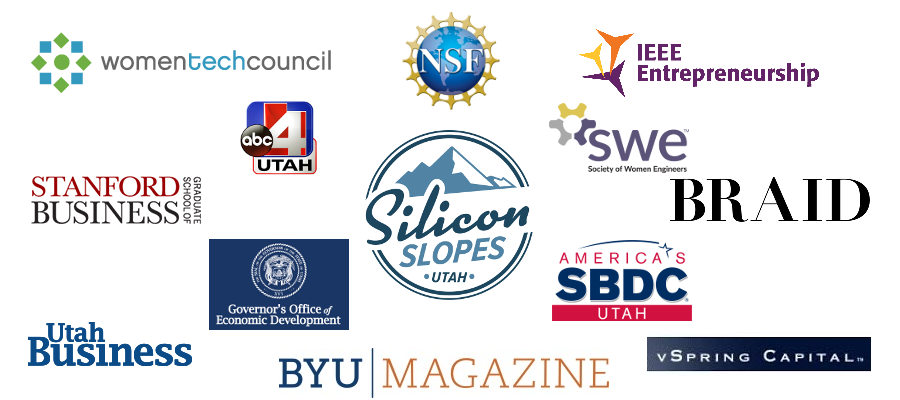The startup capital market is tough, and and all signs show that it’s getting tougher to get startup funding. It won’t be impossible to raise capital, it will just be really, really hard and only the entrepreneurs with all the insider info will succeed. Read on to learn more about the challenges that you’ll face…. and what to do to overcome them. As an update, near year-end, raising capital hasn’t been as tough as projected, BUT I postulate that is because the public equity markets are at or near all time highs. However, the insights below (and free resources below) on raising capital are just as helpful in good times as in bad times. And don’t forget, all the investments that have been made have not been “equally distributed”, much of the total dollars has gone into existing portfolio companies.
The National Venture Capital Association (NVCA) which counts most of the top venture capital firms and many smaller firms as members, recently released a report on this topic. They opening line of the report?
“Fasten your seatbelts,
it’s going to be a bumpy ride.“
 The NVCA expects that investment in the startup ecosystem will drop significantly. One of the drivers of this is the fact that in 2019, a significant amount of the capital invested came from the so-called “nontraditional startup investors”, those that aren’t traditional venture capital firms or angel investors. These organizations did invest in startups, but are now likely to migrate away from, investing money in high-risk and illiquid startup companies. In short, according to the NVCA, “…capital will dry up.”
The NVCA expects that investment in the startup ecosystem will drop significantly. One of the drivers of this is the fact that in 2019, a significant amount of the capital invested came from the so-called “nontraditional startup investors”, those that aren’t traditional venture capital firms or angel investors. These organizations did invest in startups, but are now likely to migrate away from, investing money in high-risk and illiquid startup companies. In short, according to the NVCA, “…capital will dry up.”
Tech startup layoffs since March, 2020 total nearly 66,000 employees from over 500 companies and some expect that more than 3/4 of startups will be forced to cut 10% to 50% of employees over the next 2-4 quarters, is that you?
So what’s happening and what can you do to thrive in this environment. The NVCA addressed the high level of capital that venture capital companies had available at the beginning of 2020.
“The U.S.VC industry started the year with about $120 billion in dry powder, i.e., capital available to VC investors to deploy to startups. ”
The report continues, “While this represents a record amount of dry powder and is a strong position for the industry to enter a downturn, this capital will not be nearly enough to blunt the negative impact of the COVID-19 crisis.”
Here’s the problem. For every $1 invested by a VC firm in at IT company, they reserve another $1 for follow-on investments and life science investors reserve $2 for future investments for every initial investment dollar.
So a lot of that $120 billion is already reserved for existing portfolio companies.
In addition, since 2014 more than 10,000 U.S. companies in the U.S. have received venture capital – and many of them will need what they think of as their share of that $120 billion. Maybe that includes you, if you’ve raised venture capital investment already….but only if you are viewed as a good long term investment! One of my first Directors, a VC, said that, in a crisis, it will take about a year for VC firms to “fix or kill” bad companies in their portfolio.
In a crisis, it takes about a year for VC firms to fix or kill bad companies in their portfolio
 What makes things worse, as the Wall Street Journal reported, is that, “Some limited partner investors are asking venture firms to slow down or cut their pace of startup investing, while still others are analyzing their portfolios to determine how much to invest this year.”
What makes things worse, as the Wall Street Journal reported, is that, “Some limited partner investors are asking venture firms to slow down or cut their pace of startup investing, while still others are analyzing their portfolios to determine how much to invest this year.”
That means that the source of capital venture capital funds, those limited partners, which include big pools of money like university endowments, foundations, and pension funds, are rethinking their enthusiasm for startup capital! So the replenishment of that dry powder will slow waaaay down. And let’s not forget, if VC funding goes in the tank angel funding will follow suit – they don’t want to get caught with an investment that can’t “keep going”.
In short, do you know how to find investors in this market? And how to make sure the investors you have are committed to follow-in investments in your company?
So what are you going to do to find investors and raise capital?
Summary actions with details below:
- Start Conserving Cash!
- Grab Our FREE VentureWrench Crisis Capital Guide – 5 Changes In Startup Funding in a Down Economy!
- Get Super Strategic about Investors and Potential Investors (Consider InvestorFind to help!)
- Get a Coach to help you Get the Inside Info you need to Succeed
- Consider our Newest online Course – Raising Capital in a Down Economy
- If you are planning to raise funding for your startup, Click to Get our FREE VentureWrench Guide to Investor Capital 50 pages of insider insights to help you succeed!!
1. How do you start conserving cash?
- If you can’t raise any capital, can you take your company into some form of hibernation, caching the technology and IP or nursing along existing customers?
- Are you skinnying down your costs in a big way? See my tips from on ways to work down costs without destroying the business (hint you may be able to avoid layoffs if you do this instead….)
- If you have most of a round raised, close now before terms start to get really bad (and they are going to get bad!)
- Get to market right now and start selling, selling, selling (and closing)!
- If you have some customers “on the hook”, get them closed with whatever discounts, terms or deals you can come up with. Clearly right now, Cash is King!
2. Click to Grab Our Free VentureWrench Crisis Capital Guide – 5 Changes In Startup Funding in a Down Economy!
3. Get Super Strategic about Investors and Potential Investors (Consider InvestorFind to help!)
Remember our strategy – Design the Perfect Investor™, which is even more important in a down market. InvestorFind™ can help you find those perfect investors fast!
4. Get a Coach to help you Get the Inside Info you need to Succeed
Right now you need insider insights more than ever! Get help from an entrepreneur who has also been on the funding side – that way you get an ally with the inside scoop.
5. Consider our Newest online Course – Raising Capital in a Down Economy
We’ve captured all that experience in a new course – taking the best of “Designing the Perfect Investor™” with the insights about what happens during a downturn – a downturn in startup capital that may last for 2-3 years!
6. If you are planning to raise funding for your startup, Click to Get our FREE VentureWrench Guide to Investor Capital 50 pages of insider insights to help you succeed!!
———————-

